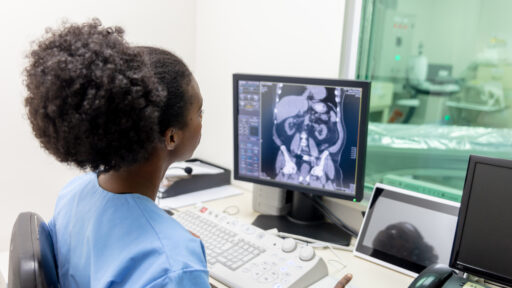Gastric Emptying is a medical test that measures the time it takes for food to move from the stomach into the small intestine. This test is particularly important for diagnosing conditions that affect the normal motility of the stomach, such as gastroparesis or other digestive disorders.
How It Works:
- Consumption of a Test Meal: The procedure begins with the patient eating a small, standardized meal that contains a small amount of a radioactive substance (radiotracer). The meal is typically something like scrambled eggs, toast, or oatmeal, which has been mixed with the radiotracer.
- Imaging: After consuming the meal, a series of images are taken at regular intervals using a gamma camera. These images track the movement of the radiotracer through the stomach over time, allowing the doctor to see how quickly the stomach is emptying.
- Monitoring the Process: The imaging usually occurs at several time points, often at 30 minutes, 1 hour, 2 hours, and 4 hours after the meal. This helps to create a detailed profile of the stomach’s emptying process.
- Analysis: The images are analyzed to determine the percentage of the meal that has emptied from the stomach at each time point. Based on this information, the doctor can assess whether the stomach is emptying at a normal rate or if there is a delay.

